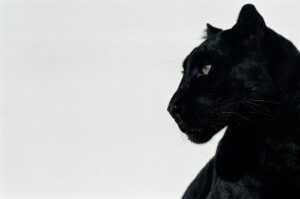Journalism Internship writer: Schiaparelli’s animal couture should lead the way for cruelty free fashion

When Kylie Jenner arrived at Paris Fashion Week with a lion’s head fixed on her dress – the internet erupted. Perhaps it was purely the idea of the controversial reality-star rather than the dress, as seen by the lack of criticism for Naomi Campbell’s wolf-headed apparel. But the immediate anger towards the outfit for ‘promoting trophy hunting’ dragged up one question: Why are we still using fur in fashion?
Creative director Daniel Roseberry’s show, derived from Dante’s Inferno, featured many divisive, faux-fur symbols representing lust, pride and avarice in the form of a leopard, lion and she-wolf respectively. The dress itself was composed of wool and silk faux fur embroidered onto a hand sculpted foam base, then painted for the realistic effect that shocked many, with ‘NO ANIMALS HARMED IN MAKING’ the look, as reported on Schiaparelli’s official Instagram page. However, many believe that although the dress was made with a faux lion-head it still promotes wearing real furs and can put more animals at risk by supporting the idea that fur is a luxury.
Schiaparelli are not the first to use animals in this way to promote luxury fashion. In Harry Winston’s 2007-2008 ‘exotic magic’ campaign, diamonds and other luxurious jewels were modelled by a range of animals and insects to promote the luxury brand, whilst the French jeweller Cartier is represented by a panther, said on their website to be ‘a wild, untameable animal whose symbolism and elegance have reigned over the Maison’s creativity’. This shows that animals have a historical importance in luxury marketing, and getting rid of the use of fur, or faux fur, will need to be a gradual change for the industry. The luxury fashion industry needs to feel a societal dislike and disapproval of the use of animals in order to break away from fur completely. Letting some luxury brands use animals in marketing but others not in design, creates a grey area for the exploitation of animals.
Nevertheless, Schiaparelli’s move towards faux-fur proves that this gradual change is possible. The brand has moved to cruelty-free faux-fur, and could now make a sustainable move away from using animals completely.
Even now faux fur is no more sustainable than real fur, which needs to change. Using real fur as a textile often involves needless deaths of endangered animals and the use of harmful chemicals in the preservation of fur, negatively impacting the environment by damaging natural ecosystems. However, faux fur used in fast fashion garments also has a negative impact on the environment due to the pollution it causes – faux fur often has toxic chemicals in the dye used, and the fibres in the material itself take approximately 1000 years to biodegrade.
The designs from Schiaparelli are not meant to be thrown in a landfill after a few uses though – these are incomparable to the waste created by fast fashion because they are more than fashion – the dresses are an expression of art. Handcrafted and ultra-realistic, the dresses are an embodiment of Roseberry’s creative vision.
There is still a danger that these designs will be perceived as a trend, and not only will there be an increase in the use of faux fur but real fur too. Many worry that the designs encourage trophy-hunting and poaching due to the historical use of animal furs, including lions and other species, sometimes forcing them onto the brink of extinction. The People for the Ethical Treatment of Animals (PETA) defended the choice to use the animals in the “fabulously innovative” designs with PETA’s President, Ingrid Newkirk suggesting that the designs “celebrate the beauty of wild animals and may be a statement against trophy hunting” and praised Schiaparelli for the cruelty free designs saying that “We encourage everyone to stick with 100% cruelty-free designs that showcase human ingenuity and prevent animal suffering”.
So, as seen in Schiaparelli SS23, cruelty free fur is possible and ethical – whilst with limited consumption – raising the question: Why not cruelty free?
